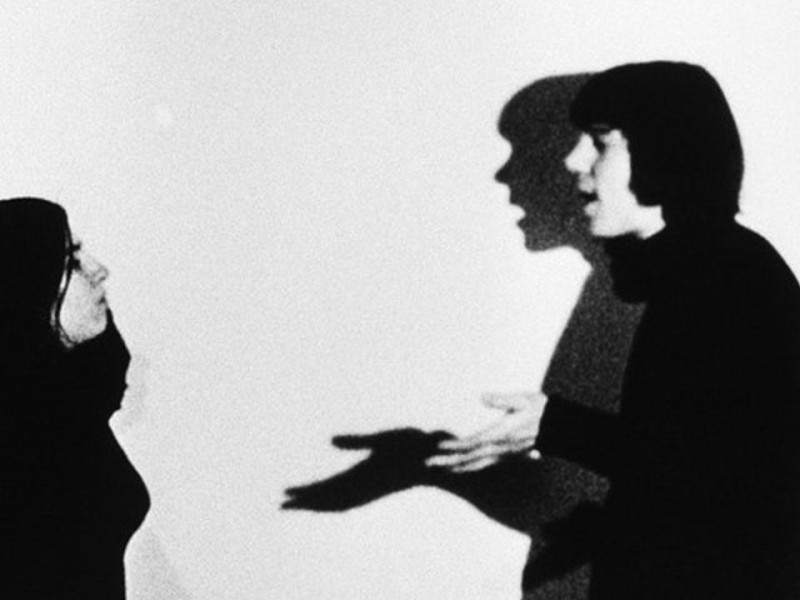

Hollis Frampton's Hapax Legomena
Were we a luckier bunch, this month would find us celebrating the 75th birthday of one of the most fascinating artists of the twentieth century with the man himself. Instead, we can only commemorate what could have been with what was, and what was was stopped short on March 30, 1984, when Hollis Frampton (b. March 11, 1936) died of lung cancer at the age of 48. The loss will be particularly felt this weekend for two reasons. The first is that the Harvard Film Archive houses the largest Frampton audio collection in the world (lectures, sound experiments, post-screening discussions, classroom sessions [Frampton taught at SUNY Buffalo’s famed Center for Media Study for over a decade]), and though we will be excitedly sampling from these precious recordings at our screenings, they must ultimately remind us of the absence of a living and breathing voice. The second also hinges on orality and its transcription. Hapax Legomena (1971-1972), whose title Frampton translated as “things said once,” turned out, unfortunately, to be a hapax legomenon within Frampton’s filmography, as it is the only multi-part, interlocking (but separable), set of films that he completed. Even as he began Hapax, Frampton conceived of and commenced upon Magellan, which was to be a film made up of nearly one thousand parts, running 36 hours, and spaced in calendrical order over 371 days. Had Frampton lived to 75, perhaps this would have been the weekend he unveiled the completed (compressed) Magellan.
In a career that swerved from painter, to poet and classicist, to sculptor and photographer, to critic and filmmaker, Frampton firmly settled into these last two in the early 1970s. The great immediate success of his Zorns Lemma (1970), and the launching of his efforts as essayist (topics for Artforum and museum catalogs included metahistory, narrative, 19th century photography, time), cradled the two-year process of making Hapax. This burst of energy produced an unwieldy wild, and critics from P. Adams Sitney to Scott MacDonald have even called Hapax uneven. It contains Frampton at his funniest and most frustrating, densest and dullest, most cerebral and most sensational, a dispersion that has caused certain parts to become Frampton’s best-known films, leaving others nearly never seen. We have here a rare occasion to engage with the entirety, to ponder the reverberations from part to part, and to framp in the following (one of seven “Mental Notes” that Frampton read before an early screening of the complete Hapax at the “Buffalo Conference on Autobiography in the Independent American Cinema” [March 1973]):
3) Brancusi said that creation should be as easy as breathing; and his beautiful and perfect works attest to the depth and ease of his breath. But sometimes the breath comes hard, in choking spasms, and sometimes it is reduced to the merest sibilance. Creation is just as uneasy as breathing. With inspiration, we draw in breath. In the end, we expire. While the breath runs, we feel moved, mysteriously, to conspire, to share breath. Of all the arts, none responds more fully and intricately to the flow of the breath of life than does film, nor does any other give itself so freely to the sharing of breath, unless we take inspiration from Ovid and look to an Art of Love, in which closest of all conspiracies we conceive, and were conceived.
Introductory text written by Hollis Frampton scholar Ken Eisenstein, who also compiled the film notes and will introduce the Friday, March 4 screening.




